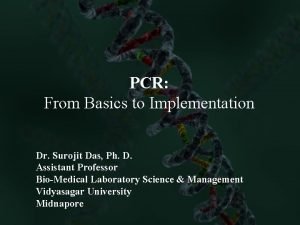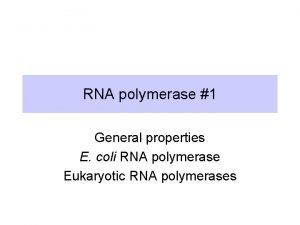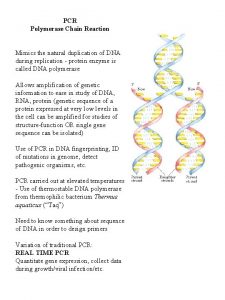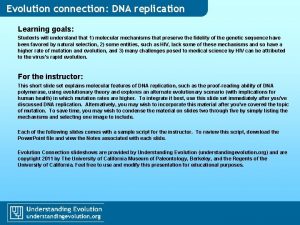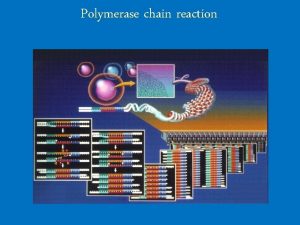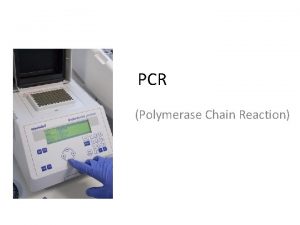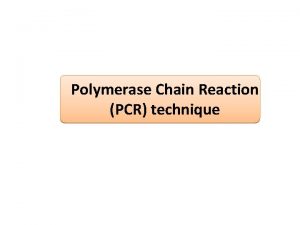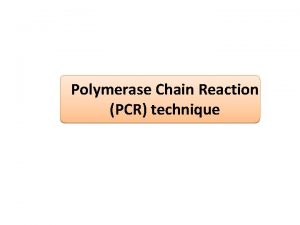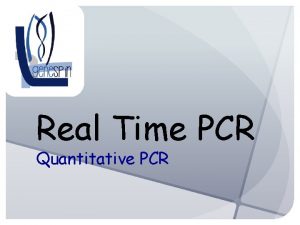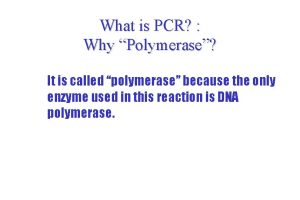What is PCR Why Polymerase It is called













- Slides: 13

What is PCR? : Why “Polymerase”? It is called “polymerase” because the only enzyme used in this reaction is DNA polymerase.

What is PCR? : Why “Chain”? It is called “chain” because the products of the first reaction become substrates of the following one, and so on.

What is PCR? : The “Reaction” Components 1) Target DNA - contains the sequence to be amplified. 2) Pair of Primers - oligonucleotides that define the sequence to be amplified. 3) d. NTPs - deoxynucleotidetriphosphates: DNA building blocks. 4) Thermostable DNA Polymerase - enzyme that catalyzes the reaction 5) Mg++ ions - cofactor of the enzyme 6) Buffer solution – maintains p. H and ionic strength of the reaction solution suitable for the activity of the enzyme

The Reaction PCR tube THERMOCYCLER

Denature (heat to 95 o. C) Lower temperature to 56 o. C Anneal with primers Increase temperature to 72 o. C DNA polymerase + d. NTPs


Applications of PCR • Classification of organisms • Genotyping • Mutagenesis • Mutation detection • Sequencing • Cancer research • Detection of pathogens • DNA fingerprinting • Drug discovery • Genetic matching • Genetic engineering • Pre-natal diagnosis

MOLECULAR IDENTIFICATION:

Molecular Identification: Detection Of Pathogens

Molecular Identification: Detection Of Pathogens Sensitivity of detection of PCR-amplified M. tuberculosis DNA. (Kaul et al. 1994)

Summary blood, chorionic villus, amniotic fluid, semen, hair root, saliva 68, 719, 476, 736 copies Gel Analysis, Restriction Digestion, Sequencing

Conclusion The speed and ease of use, sensitivity specificity of PCR essential tool of molecular biology and made PCR the most widely used and powerful technique with great spectrum of research and diagnostic applications.

 Polymerase chain reaction (pcr) applications
Polymerase chain reaction (pcr) applications Hey bye bye
Hey bye bye Rna polymerase 1 2 3
Rna polymerase 1 2 3 Dna polymerase
Dna polymerase Molecule dna
Molecule dna Dna polymerase function in dna replication
Dna polymerase function in dna replication Helicaee
Helicaee Transcription
Transcription Types of dna polymerase in eukaryotes
Types of dna polymerase in eukaryotes Dna polymerase
Dna polymerase Transcription initiation in eukaryotes
Transcription initiation in eukaryotes Polymerase chain reaction
Polymerase chain reaction Dna polymerase
Dna polymerase Corbettmaths
Corbettmaths
